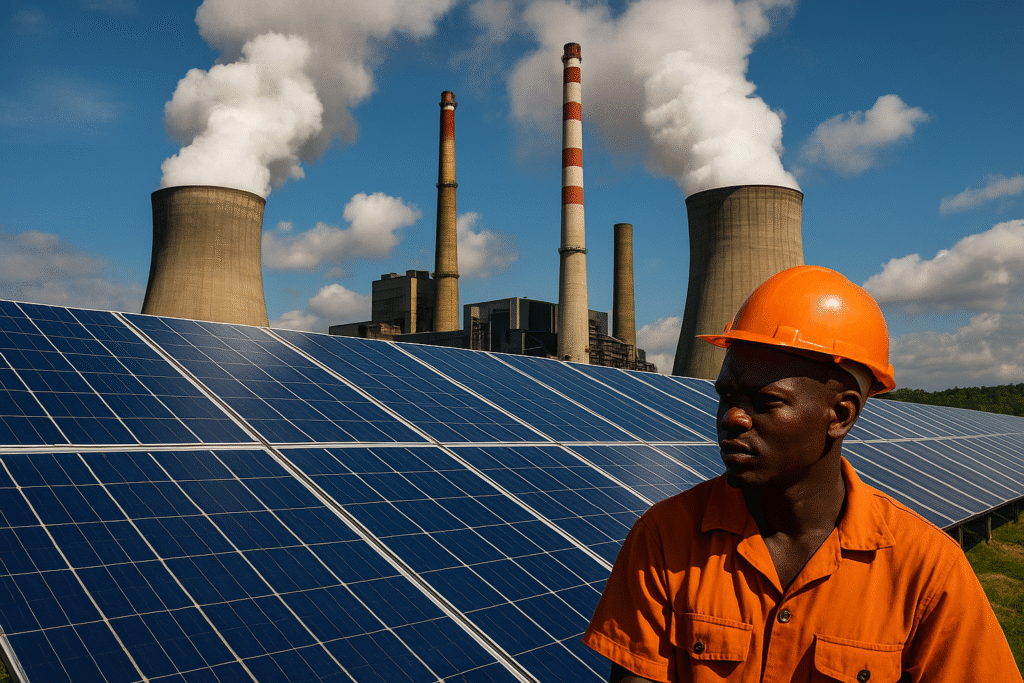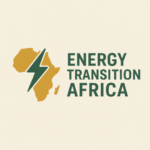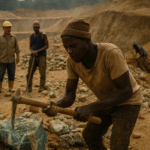A few years ago, during a civil society exchange in Nairobi, a Kenyan energy advocate told me something that has stayed with me: “We’ve got panels. We’ve got Chinese engineers. But what we don’t have is power in our hands—literally.”
That quiet frustration speaks to a larger truth about China’s role in Africa’s green transition: the promises are big, the partnerships are deepening, but the power—both electrical and political—still feels unevenly distributed.
The Promises: Big on Paper, Murky in Practice
Through platforms like the Forum on China–Africa Cooperation (FOCAC) and the Belt and Road Initiative (BRI), China has pledged to help Africa “green” its future. In 2021, it even announced a halt to funding new coal abroad, pivoting to solar, wind, and hydropower investments. At the 2021 FOCAC summit, Beijing doubled down on this message, promising to support Africa’s green transformation.
But what happens between pledge and practice?
According to the ODI’s April 2025 report, China’s implementation model—largely driven by state-owned firms through engineering, procurement, and construction (EPC) contracts—has created infrastructure, but not necessarily empowerment.
Let’s unpack that, country by country.
Kenya: Panels Without Power Transfer
Kenya is often touted as an African clean energy success story. Over 90% of its grid power is renewable, thanks largely to geothermal and hydro. But solar is catching up—and here’s where China comes in.
Projects like the Garissa Solar Power Plant, funded via a $135 million concessional loan from China’s Exim Bank and built by the China Jiangxi Corporation for International Economic and Technical Cooperation, have added significant capacity to the grid. Yet, most of the components were imported. Most of the jobs were short-term. And most of the technical know-how left with the contractors.
“It’s like someone built you a house, gave you the keys, and walked away without telling you how the plumbing works,” a local technician told us during a site visit in 2024.
Kenya’s Ministry of Energy now faces a challenge: how to ensure that future deals come with training, maintenance, and local procurement baked into the contracts—not as afterthoughts.
Mozambique: Caught in the Gas Crosswind
Mozambique has one of Africa’s largest natural gas reserves, and China has taken note. While FOCAC champions green growth, the bulk of China’s investment in Mozambique remains centered on fossil fuels—especially liquefied natural gas (LNG).
Yes, there are Chinese-supported solar and hydro projects, including dam work along the Zambezi. But as ODI Global notes, the scale of China’s green portfolio in Mozambique pales in comparison to its gas infrastructure funding.
The contradiction is sharp: FOCAC touts “win-win” climate cooperation, but in Maputo, Chinese loans are underwriting a fossil fuel future. Activists fear Mozambique is locking itself into a carbon-intensive model under the guise of transition.
South Africa: Solar Boom, Unequal Returns
South Africa’s energy story is one of desperate need and cautious optimism. With routine blackouts (load shedding) and aging coal plants, the shift to renewables isn’t just desirable—it’s existential.
China has stepped up, flooding the market with low-cost solar panels. According to ENGIE Africa, the 75MW Grootspruit project—a joint effort with Pele Green Energy—is one of many now underway.
But the sheer volume of Chinese imports is sparking backlash. South African manufacturers argue that subsidized equipment from abroad is destroying prospects for a local green industrial base.
The Department of Trade, Industry and Competition (DTIC) is considering measures to balance the playing field, including tariffs and local content requirements.
Meanwhile, the country’s Just Energy Transition Partnership (JETP)—worth over $8.5 billion—has attracted global attention. But unless China aligns its model with South Africa’s developmental goals, the tension between speed and sovereignty will grow.
What’s Really at Stake: A Political Tug-of-War
Let’s be honest: the politics of China-Africa green energy relations are layered. On one hand, China fills a financing void that many Western nations have vacated. Where others hesitate, Beijing builds.
But the terms of engagement often reflect China’s priorities more than Africa’s. EPC-heavy contracts rarely foster local innovation. Project ownership remains lopsided. And African governments, lured by fast delivery and concessional loans, sometimes sacrifice long-term sustainability for short-term wins.
As ODI Global’s 2025 study concludes, “China’s model accelerates infrastructure delivery but often delays institutional learning.”
What Civil Society Must Demand
This isn’t an anti-China story. It’s a call for recalibration.
African civil society must engage beyond critique. We must:
- Advocate for transparency in all energy contracts.
- Push for mandatory skills transfer and local employment clauses.
- Demand regional coordination, so African countries negotiate from a place of strength—not desperation.
- Monitor projects post-construction—not just during ribbon-cuttings.
And as we highlighted in our earlier blog, “Fossil Fuel Freedom: Why Nigeria Must Ditch Oil to Secure Its Future”, several countries like Uganda and Malawi are proving that Africa can lead—if it insists on leadership.
Final Thought: Africa Can’t Afford Another Silent Deal
We’re no longer in a world where infrastructure alone defines progress. In the age of the climate emergency, it’s how we build that matters.
China’s involvement in Africa’s green transition can be transformative. But only if the continent moves from being a project site to a partner. Only if the green goals match the grey realities.
Because Africa isn’t just looking for power. It’s looking for control over its energy future.



